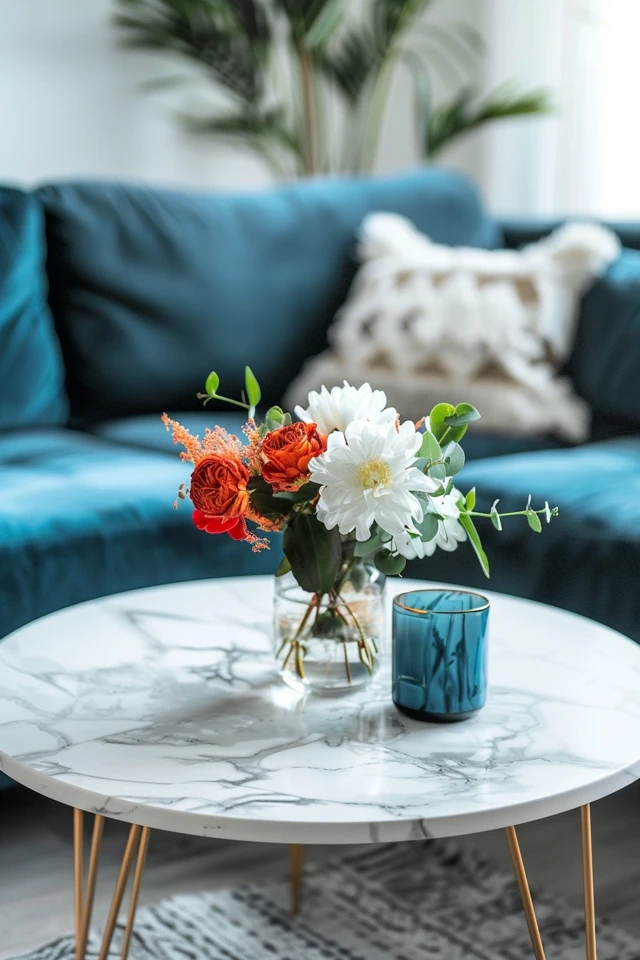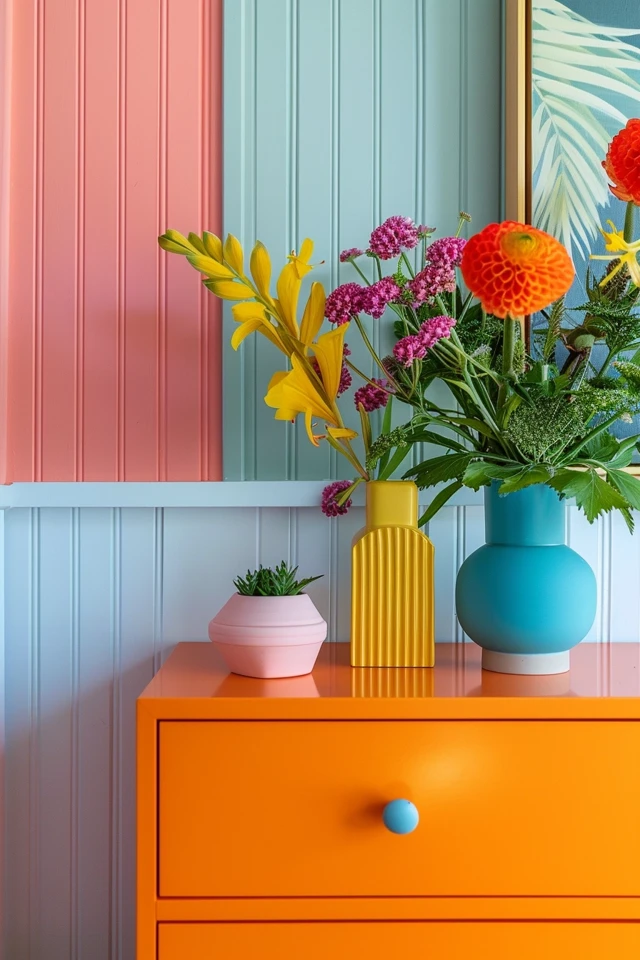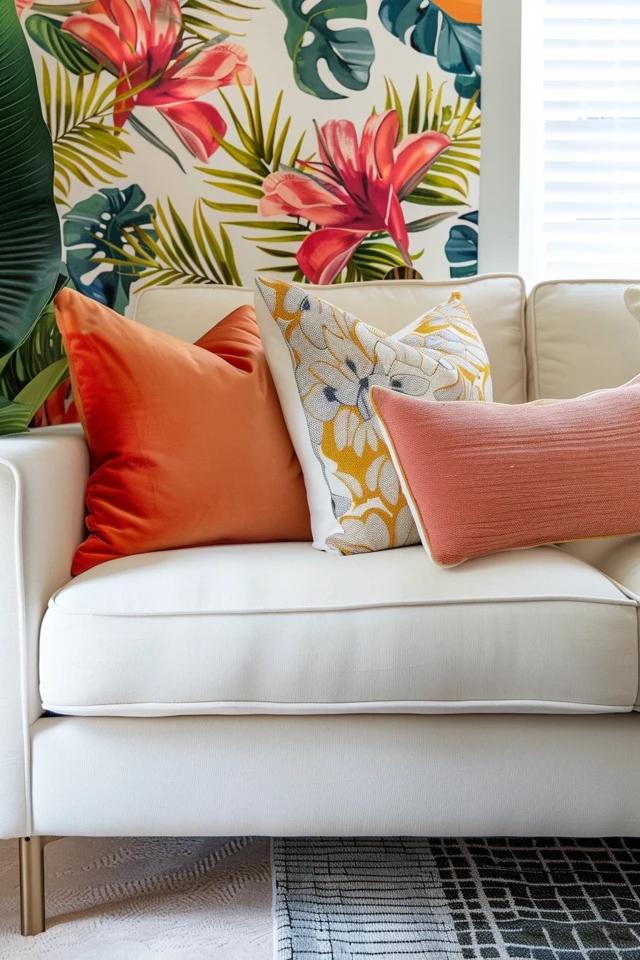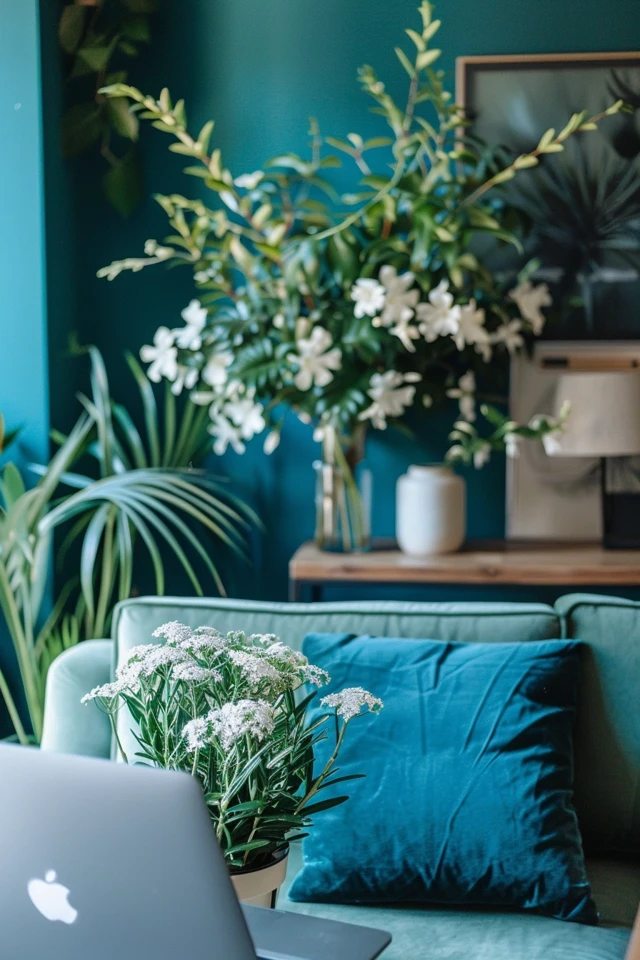Before Reading this Article, Hire Us As Your Designer or Take a Look at My Top 3 Amazon Picks!
If you are looking to blend Amazon's furniture finds with a personalized touch for your space, check out my portfolio, and hire us! You'll get 3 Idea boards, 2 Concept Boards, 2 Realistic Renderings, a Floor Plan, and a Shopping List! Everything's online, plus a 25% discount on your first online interior design project with my Havenly Promo code 4c7441bcfb. With over 2,000 designs since 2017 and top US brand partnerships, your project is in expert hands. US only. Ready to start?
Co Kildare
$2.99 (as of May 21, 2024 15:44 GMT -05:00 - More infoProduct prices and availability are accurate as of the date/time indicated and are subject to change. Any price and availability information displayed on [relevant Amazon Site(s), as applicable] at the time of purchase will apply to the purchase of this product.)Sam & Brendan
(as of May 21, 2024 15:44 GMT -05:00 - More infoProduct prices and availability are accurate as of the date/time indicated and are subject to change. Any price and availability information displayed on [relevant Amazon Site(s), as applicable] at the time of purchase will apply to the purchase of this product.)A Fistful of Ammo
(as of May 21, 2024 15:44 GMT -05:00 - More infoProduct prices and availability are accurate as of the date/time indicated and are subject to change. Any price and availability information displayed on [relevant Amazon Site(s), as applicable] at the time of purchase will apply to the purchase of this product.)Have you ever walked into a beautifully designed space that immediately made you feel at ease and inspired? I certainly have, and it’s an experience that stays with you. It’s as if the colors, furniture, and decor were handpicked just for you, creating a sense of harmony and reflection of your unique style.
But when it comes to transforming your own home, the decision between tackling the project yourself or hiring an online interior designer can be daunting. With so many options and considerations, it’s easy to feel overwhelmed.
That’s why I’m here to guide you through this decision-making process. I’ve been in your shoes, standing in the middle of a room that needed a makeover but not knowing where to start. I know the excitement and apprehension that comes with designing your own space. And I also understand the allure of hiring an online designer who can bring their expertise and vision to the table.
In this article, we’ll explore the pros and cons of both DIY and hiring an online designer. By considering your design preferences, budget, and the scope of your project, you’ll be equipped to make the right choice for your home.
Key Takeaways:
- Choosing between DIY and hiring an online designer can be overwhelming, but considering your design preferences, budget, and project scope will help you make an informed decision.
- DIY offers cost savings, creative control, and the opportunity to learn new skills.
- Hiring an online designer provides professional expertise, insider connections, and saves you time and effort.
- Consider hiring a designer for major remodels, whole home redesigns, specialty rooms, and maximizing resale value.
- Weigh the potential downsides of hiring a designer, such as costs and limited creative control, against the benefits.
The Benefits of Hiring a Professional Interior Designer
When it comes to renovating or redecorating your home, hiring a professional interior designer can make all the difference. With their design expertise, insider connections, and project management skills, they bring a level of professionalism and finesse that surpasses the DIY approach. Here are the top benefits of hiring a professional interior designer:
Design Expertise
Hiring a professional interior designer means tapping into their extensive knowledge and training in interior design principles. From understanding architectural styles to curating cohesive design aesthetics, they have the expertise to create aesthetically pleasing and functional spaces. Their keen eye for detail ensures that every element in your home is thoughtfully considered, resulting in a beautifully curated space that reflects your style and preferences.
Insider Connections
Interior designers have insider connections with contractors, tradespeople, and vendors. These established relationships enable them to access discounted rates on furnishings and materials, helping you save both time and money. Furthermore, their connections allow for seamless coordination and collaboration on your project, ensuring a smooth and efficient process from start to finish.
Project Management
Hiring an interior designer takes the stress out of managing your home renovation or redecoration project. They take charge of all the details, from initial consultations and conceptualization to space planning and budget management. Their project management skills ensure that the project stays on schedule and within budget, while still achieving the desired outcome.
By entrusting your project to a professional designer, you can relax and enjoy the process, knowing that your vision is in capable hands. Take a look at the table below to see a comparison of the benefits of hiring a professional interior designer versus the DIY approach:
| Benefits of Hiring a Professional Interior Designer | Benefits of DIY Interior Design |
|---|---|
| Design expertise and professional guidance | Opportunity for cost savings |
| Access to insider connections and discounted rates | Full creative control and personalization |
| Project management and coordination | Opportunity to learn new skills |
In conclusion, hiring a professional interior designer brings a wealth of benefits to your home renovation or redecoration project. Their design expertise, insider connections, and project management skills ensure a successful outcome while saving you time, effort, and potentially money.
When to Hire an Interior Designer
Certain interior design projects call for bringing in a professional interior designer versus attempting them as a DIY job. Major remodels like kitchens, bathrooms, and additions, as well as whole home redesigns, often require the expertise of a designer due to their complexity and the potential for costly mistakes.
“A professional interior designer has both the knowledge and experience to navigate the challenges of major remodels and whole home redesigns. Their expertise ensures that the project is executed flawlessly, avoiding costly errors and providing a space that not only meets your aesthetic desires but also addresses functional and practical considerations.”
Specialty rooms such as home theaters and wine cellars also benefit from a designer’s knowledge of incorporating necessary elements and creating a functional space. These rooms often require specialized equipment, proper acoustics, and specific storage solutions that designers are well-versed in.
Furthermore, if you’re planning to sell your home in the future, hiring an interior designer can help maximize its resale value. Designers have a keen eye for creating appealing and marketable spaces that attract potential buyers. By incorporating the latest design trends and staging techniques, they can transform your home into a desirable property in a competitive real estate market.

Case Study: Maximizing Resale Value
A recent study conducted by Home Design Solutions analyzed the impact of hiring an interior designer on resale value. They compared homes that were professionally staged by a designer with homes that were not. The results were astounding:
| Category | Homes with Designer Staging | Homes without Designer Staging |
|---|---|---|
| Average Selling Price | $500,000 | $420,000 |
| Selling Time | 30 days | 60 days |
| Final Sales Price vs. Listing Price | 98% | 93% |
The study clearly indicates that hiring an interior designer for staging purposes can significantly impact the overall selling price, reduce the time on the market, and increase the final sales price compared to homes without professional staging.
Therefore, if you have a project that falls under the category of major remodels, whole home redesigns, specialty rooms, or if you want to enhance the resale value of your home, hiring an interior designer is a wise decision.
Potential Downsides of Hiring a Designer
While hiring a professional interior designer has numerous benefits, it’s essential to consider the potential downsides before making a decision. Let’s explore some of the challenges you might face when hiring a designer for your home project.
1. Costs
One of the significant downsides of hiring a designer is the cost. Designer fees, material costs, and labor charges can add up quickly, potentially exceeding your budget. It’s crucial to have a clear understanding of the designer’s pricing structure and ensure it aligns with your financial capabilities.
2. Creative Control
When you hire a designer, you may need to compromise on some creative control. Designers often have their own unique design ideas and preferences, which may not align perfectly with yours. You might find yourself in a situation where you have to let go of certain design choices to accommodate the designer’s vision.
3. Limited Options
Working with a designer can sometimes limit your options. They may recommend specific furnishings and materials that are pricier than what you initially had in mind. While these options might enhance the overall aesthetic and quality of your space, they can also strain your budget.
4. Lack of Flexibility
Another potential downside of hiring a designer is the lack of flexibility in the decision-making process. Designers may have set timelines and project management practices that might not allow for last-minute changes or revisions. If you prefer having full control over every aspect of your project and the ability to make adjustments along the way, hiring a designer might limit your flexibility.
5. Pricier Options
Lastly, working with a designer often means exploring pricier options for your home project. Designers have access to a wide range of high-quality and exclusive furnishings and materials that may come with a higher price tag. If your budget is a concern, hiring a designer might involve additional costs that you need to consider.
| Potential Downsides of Hiring a Designer | How to Mitigate Them |
|---|---|
| Costs | Get a clear understanding of the designer’s pricing structure and establish a realistic budget beforehand. |
| Creative Control | Communicate your design preferences clearly and discuss any concerns you have about compromising on creative control. |
| Limited Options | Discuss your budget and desired design aesthetic with the designer to ensure they consider affordable options that align with your vision. |
| Lack of Flexibility | Prioritize open communication with your designer to find a balance between project timelines and the flexibility to make adjustments. |
| Pricier Options | Clearly communicate your budget to the designer and establish spending limits for specific aspects of the project. |
While these downsides should be carefully considered, they shouldn’t overshadow the benefits of hiring a professional designer. By understanding and addressing these challenges, you can make an informed decision that best suits your needs, preferences, and budget.
The Benefits of DIY Interior Design
When it comes to interior design, embracing a DIY approach can offer numerous advantages that go beyond just cost savings. By taking on the creative control, learning new skills, and infusing your own personalized style, you can transform your space into a reflection of your unique taste and personality.
One of the biggest advantages of DIY interior design is the significant cost savings it brings. By avoiding designer fees and markups, you can allocate your budget more efficiently. Additionally, shopping sales, scouring discount retailers, and repurposing existing furniture and décor are great strategies to reduce expenses without compromising style and quality.
“I saved thousands of dollars by doing my own interior design. By shopping smartly and reusing items I already had, I was able to achieve the same creative vision at a fraction of the cost.” – Sarah Thompson, DIY Enthusiast
Another key benefit of DIY interior design is the unparalleled creative control it offers. With DIY, you have the freedom to make every decision based on your personal taste and preferences, without compromise. From choosing paint colors and selecting furniture to adding unique decorative touches, you have the power to create a space that truly reflects your individual style.
Through DIY interior design, you also have the opportunity to learn new skills and gain valuable hands-on experience in decorating and building. Whether it’s mastering the art of painting, honing your upholstery skills, or learning to install light fixtures, each project offers a chance to expand your knowledge and expertise in home improvement.

Empowering Personal Style through DIY
By embracing DIY interior design, you can infuse your space with a personalized style that is truly one-of-a-kind. Whether you lean towards modern minimalism or eclectic bohemian, DIY allows you to select every piece and detail, ensuring cohesive and authentic expression of your personal aesthetic.
Furthermore, DIY interior design projects often become a labor of love, providing a sense of accomplishment and pride in your home. Each project completed becomes a part of your journey, showcasing your creativity and dedication. It’s an opportunity to create a space that feels truly yours.
| Advantages of DIY Interior Design | |
|---|---|
| Cost savings | Create a beautiful space on a tight budget |
| Creative control | Express your personal style without compromise |
| Learn new skills | Gain hands-on experience in decorating and building |
| Personalized style | Infuse your space with a unique aesthetic |
Embracing DIY interior design can be an empowering and fulfilling endeavor that allows you to unleash your creativity, unlock cost savings, and create a space that reflects your personal style. From small updates to larger projects, the possibilities are endless when you take the reins of your home’s design.
Through DIY, you have the opportunity to transform your space into a true reflection of your personality, creating a home that you’ll truly love.
When DIY Interior Design Works Best
When it comes to interior design, taking a hands-on approach through DIY projects can be a rewarding and cost-effective option. While it may not be suitable for every project, DIY interior design works best for smaller projects that allow you to unleash your creativity and save money without compromising on style.
One of the key advantages of DIY interior design is its suitability for smaller projects. Whether you’re looking to redesign a single room or add some fresh decor, DIY allows you to take full control of the design process. It’s the perfect opportunity to let your personal style shine through and make your space truly unique.
Another significant benefit of DIY interior design is its budget-friendly nature. If you’re working with tight finances, opting for a DIY approach can help you avoid designer fees and potentially find more affordable options. By researching sales, exploring discount retailers, and repurposing existing items, you can create a stunning space without breaking the bank.
However, it’s important to assess whether you have enough time to dedicate to a DIY project. Unlike hiring a professional designer who can handle all the planning and execution, DIY requires research, planning, and hands-on work. Make sure you have enough time to devote to the project, ensuring a successful and satisfying outcome.
Remember, DIY interior design can be a joyful and fulfilling experience, allowing you to express your creativity, save money, and transform your space. But it’s essential to consider the complexity of the project, your budget constraints, and your time availability before deciding on the best approach for your home.
Expert Tip:
“For smaller projects, like updating a bathroom or adding new window treatments, DIY interior design can be a fun and cost-effective option. Just make sure to plan ahead, gather inspiration, and set aside dedicated time for the project.” – Emily Johnson, Interior Design Expert
| DIY Interior Design Works Best For: | DIY Interior Design May Not Be Ideal For: |
|---|---|
| Single room redesigns | Major home renovations |
| Simple updates like new window treatments or decor additions | Complex projects requiring extensive knowledge and expertise |
| Projects on a tight budget | Larger-scale projects with significant material and labor costs |
| Projects with enough time for research, planning, and execution | Tight deadlines or time constraints |
As you embark on your DIY interior design journey, prioritize projects that align with your skills, budget, and availability. Whether you’re tackling a simple room update or adding your personal touch to a space, DIY interior design offers endless possibilities for creating a home that truly reflects your style and personality.

Conclusion
After weighing the options, it is clear that choosing between hiring a professional interior designer or embarking on a DIY project depends on the scale and complexity of your home renovation or redecoration. For major renovations and designs, it is advisable to hire a designer as they possess the expertise and skillset to handle complex projects effectively. Their knowledge of architectural styles, design aesthetics, and industry connections ensures a seamless execution from start to finish. Moreover, designers can help maximize your budget to achieve the desired results.
However, for smaller projects and those with tighter budgets, DIY interior design offers cost-saving opportunities and the freedom to unleash your creativity. It allows you to personalize your space and adds a touch of your unique style and flair to the design. By taking charge of the project, you can learn new skills and acquire hands-on experience in decorating and building.
Ultimately, the decision to hire a designer or pursue a DIY approach should be based on your goals, budget, and the scope of your project. Reflect on the advantages and considerations of each option to make an informed choice that aligns with your unique situation and aspirations for your home.
FAQ
Why should I hire an interior designer instead of doing it myself?
When should I hire an interior designer?
What are the potential downsides of hiring a designer?
What are the benefits of DIY interior design?
When does DIY interior design work best?
Source Links
- https://www.quora.com/My-wife-wants-to-hire-a-interior-designer-for-our-new-home-but-I-wish-to-do-it-ourselves-by-watching-DIY-videos-What-is-the-best-option-and-why-do-you-suggest
- https://www.houzz.com/discussions/4843343/hire-a-designer-or-diy
- https://www.tallboxdesign.com/hire-pro-vs-diy-interior-design/






